How Legendary All Blacks Utilise Real-time Player Tracking Technology
Date: October 20, 2023
Decoding the Tech Behind Rugby World Cup Player Analytics
Overview
The
Rugby World Cup is pushing portable, durable, athlete data measuring wearables into the limelight. This year biometric wearables company
STATSports is serving as the go-to team for the high-level player tracking needs of the legendary
All Blacks [2]. What are these wearables? How do they work? What are they being used for? From the type of sensors employed, their safety profile, power efficiency, and robustness, to the real-time retrieval of data and the categorizing of the collected metrics, this post will unwrap the technicalities of sports wearable trackers. This post will unwrap the technicalities of sports wearable trackers, from the type of sensors, employed, their safety profile, power efficiency, and robustness, to the real-time retrieval of data and the categorising of the collected metrics.
The Heart of Sports Tracker: Sensors
Performance tracking wearables leverage several types of sensors for collecting data. Fundamentally, they include GPS units, accelerometers, gyroscopes, and magnetometers — the last three collectively referred to as inertial measurement units (IMUs).
1. **GPS units** measure the players position with a typical accuracy of 1-5m. Multiple constellations can be used to improve accuracy, along with augmented wide-band positional beacons for best-in-class positioning [3].
2. **Accelerometers** measure linear acceleration, which is valuable for tracking sudden changes in speed and direction. They are much more precise than GPS units for this, but suffer from positional accuracy losses over time.
3. **Gyroscopes** pick up the rate of rotation around an axis, making them highly effective for measuring movements like spins or turns.
4. **Magnetometers** sense the strength and direction of magnetic fields. While their use in day-to-day sporting activities is relatively minimal, they can provide valuable insights in niche cases.
In evaluating player safety, some trackers incorporate more specialised sensors like shock sensors. These units measure impact force, which can be critical information in collision sports like rugby.
There are a large number of companies providing wearable trackers for athletes, but they generally all contain some mix of the above sensors as part of their product offering. Sensor fusion algorithms may be used to combine the data and mitigate the weaknesses of each sensor type.
The Wearable Factor: Safety, Comfort, and Durability
For wearables like sports trackers, ergonomic design is paramount. The devices must be compact and lightweight enough not to inhibit the wearer's movements or pose a safety risk in event of a fall or accident. Ensuring they do not pose a safety hazard involves designing them without any sharp corners and securing them firmly to avoid them loosening during intense movements. The
World Rugby
Organisation has strict regulations on the size and shape of wearable devices allowed at the
Rugby World Cup [4].
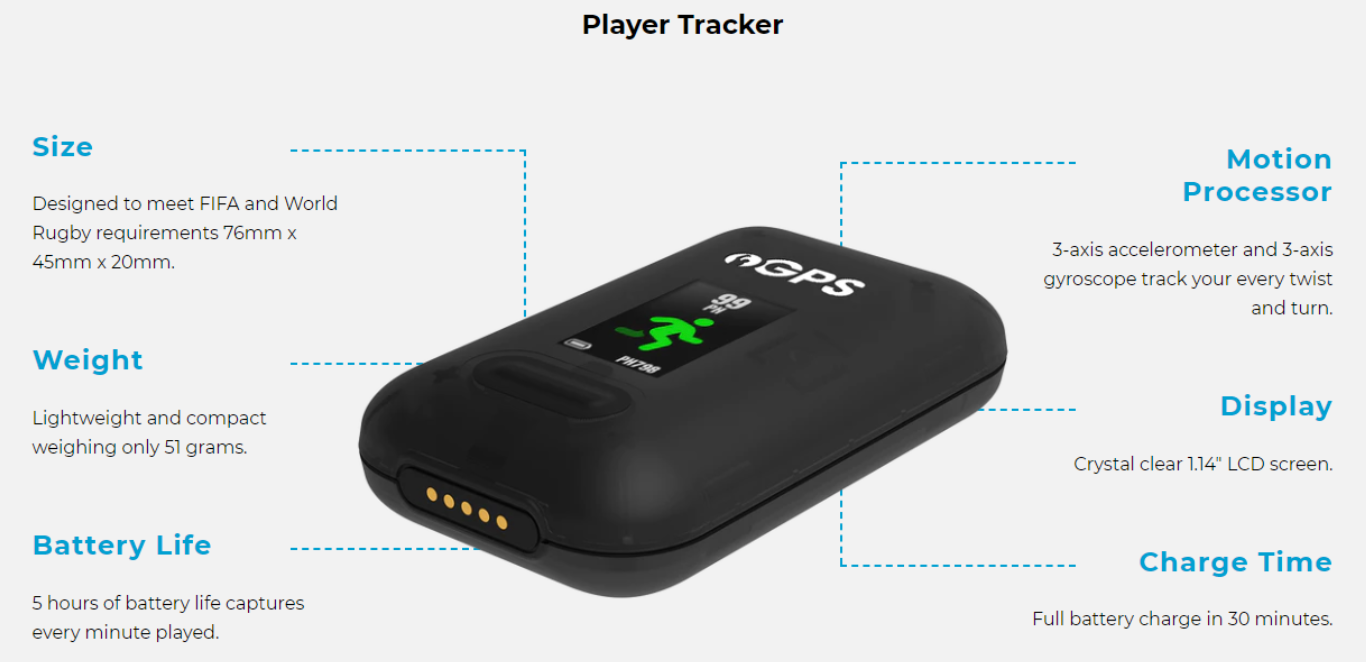
Being on the wearer for extended periods, these devices are exposed to varying elements and must therefore be robust. This durability is achieved through ingress protection (IP) rating systems that ensure resistance to external factors like dust and water.
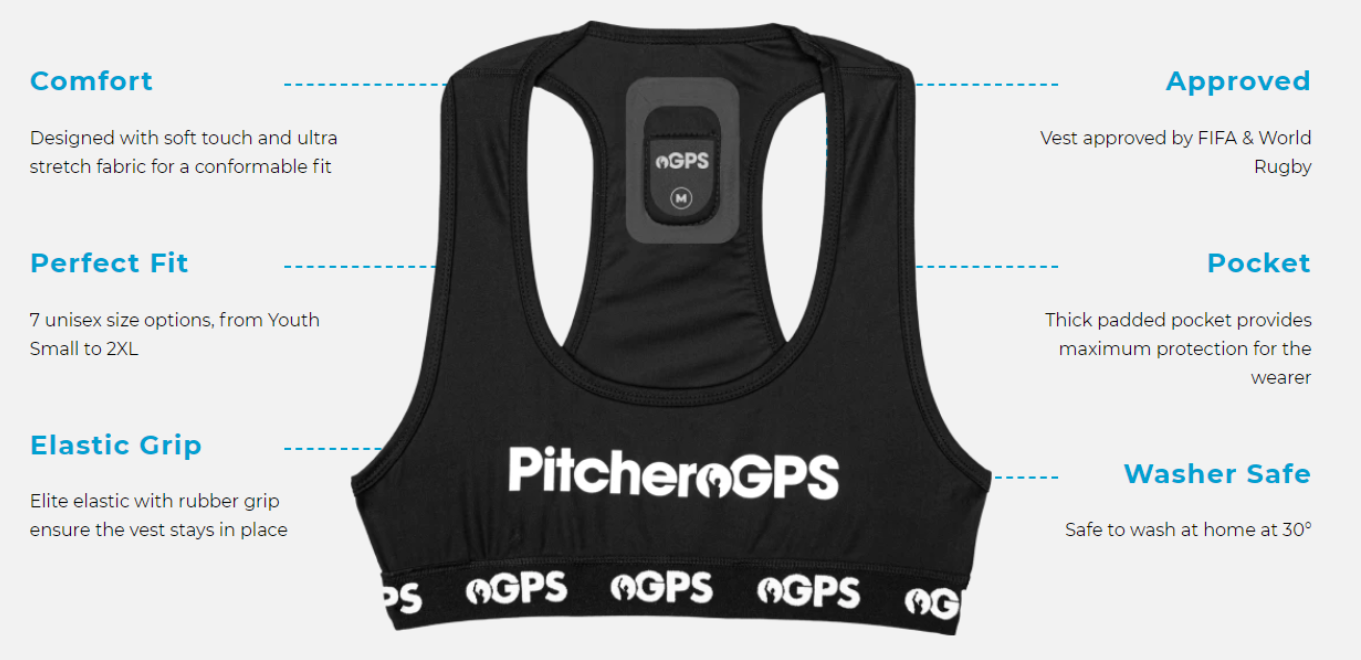
Battery Life: Making Energy Efficiency a Priority
Given their intended use during prolonged sports events or intense training sessions, sport trackers must manage energy efficiently. Optimizing the device's power management demands a delicate balance, ensuring battery longevity without compromising the frequency or precision of data collection. This must be enclosed in a small product that when worn must just about “disappear”. when playing rugby The device also needs a system for timely alerts of low battery levels to avoid interruptions in data collection.
Live Data Retrieval: Ensuring Timely Feedback
For real-time decision making in a dynamic sports scenario, the ability to retrieve data live from the device is crucial. This feature typically requires wireless communication protocols, such as Bluetooth, cellular or Wi-Fi. These technologies allow the device to communicate instantaneously with a computer, smartphone, or another receiving unit, facilitating on-the-fly strategic adjustments based on the received data.
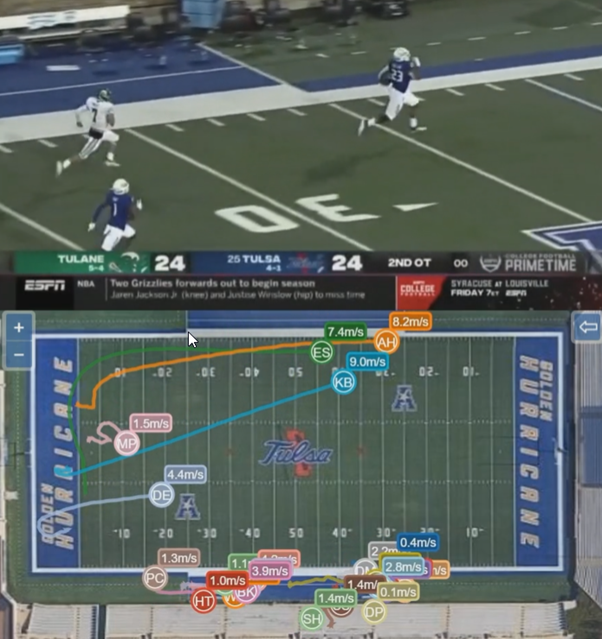
What Metrics and How?
The precise metrics that a sports tracker collects depend on the specific sport and what elements are most valuable to monitor. Commonly tracked metrics include speed, acceleration profiles[5], distance covered, heart rate, impacts[5], and skin temperature.
More specialised metrics, like collision force or hyperextension in sports like rugby, may also be tracked to assess safety risks.
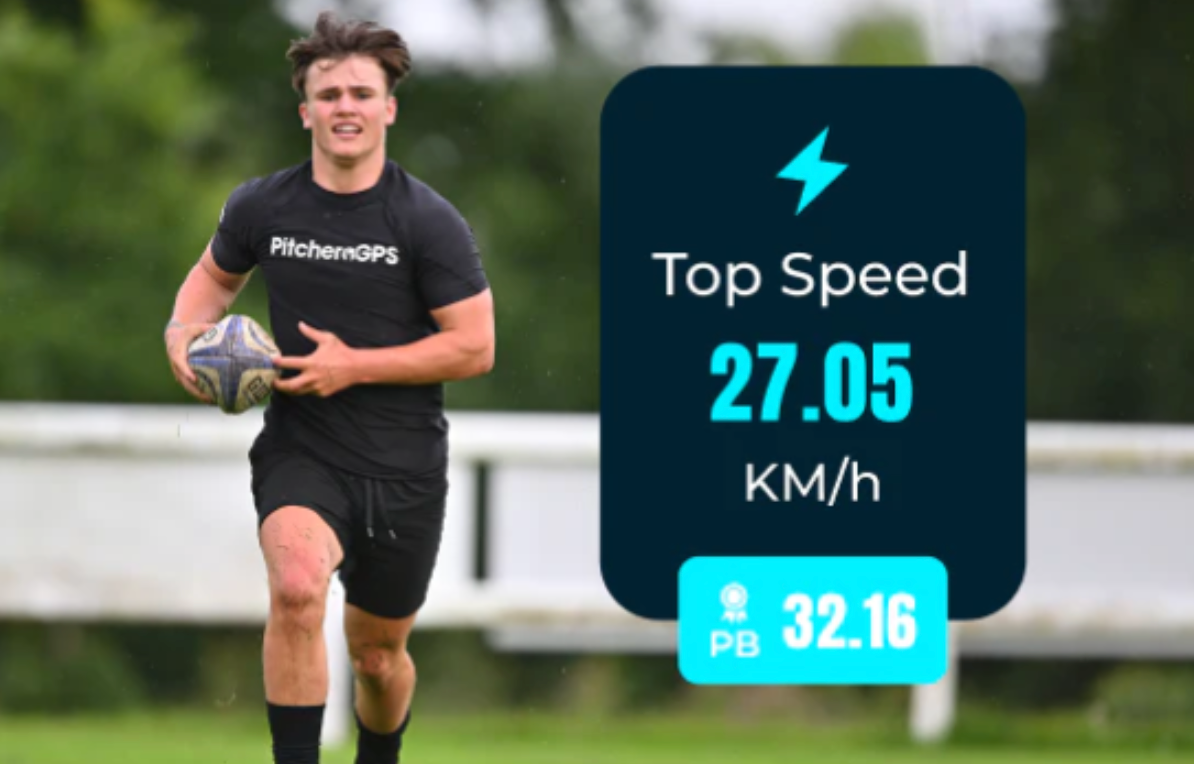
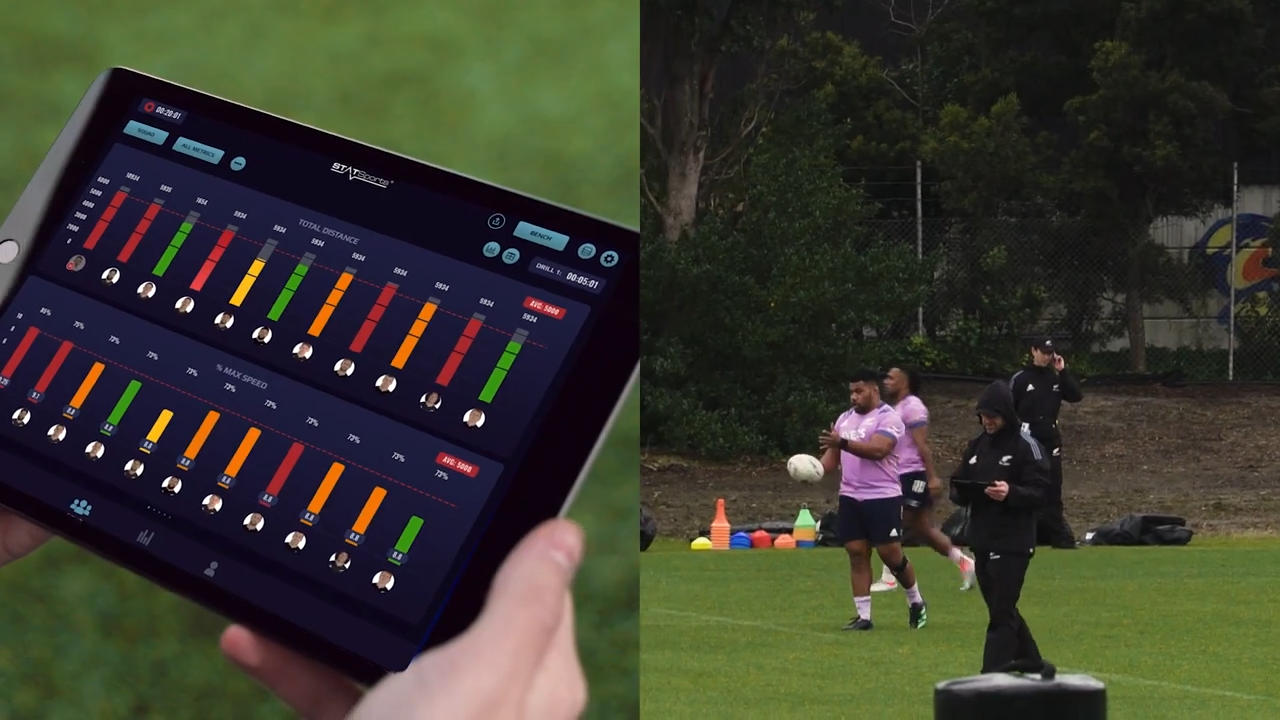
Advanced algorithms analyze these collected metrics, converting raw sensor data into valuable insights. Data from different sensors can be combined to produce more complex metrics - for example, data from an accelerometer and a gyroscope can be used together to evaluate a player's agility.
"One of the metrics we look at is high MET, and essentially, what we’re trying to understand is the acceleration/deceleration volume, or intensity."
– Nic Gill, NZ
All Blacks, Head of Strength and Conditioning [1].
Hitting the Finish Line
The interplay of intricate technology, precise implementation, and nuanced understanding of individual sports requirements culminates in the impressive potential of sports wearable trackers. Observing their incorporation into big-league games like the
Rugby World Cup is just a snippet of the possible applications.
As specialists in
electronics product design, we relish the challenges and rewards that come with designing devices that accommodate such a collection of demands. With our wealth of experience, we can be valuable partners for anyone seeking to design their unique wearable tracking solution for other applications. We welcome you to
contact us to discuss further.
We're excited to observe and participate in the continual evolution of the wearable tech space. The potential applications and benefits are profound and extend far beyond sport, in to areas like health monitoring and workplace safety. Watch this space for more insights into tech developments.
References
[1] STATSports (2023, Apr 20).
STATSports X NZ All Blacks - Behind The Science. YouTube video. Retrieved 2023-10-17, from
https://www.youtube.com/watch?v=DikSJQ1O9DY
[2] STATSports (2023, Sep 25).
STATSports Signs Up Five New International Rugby Union Teams In The Rugby World Cup. Press release. Retrieved 2023-10-18, from
https://pro.statsports.com/statsports-sign-5-rugby-world-cup-teams/
[3] STATSports.
Apex Pro Series. Product page. Retrieved 2023-10-18, from
https://pro.statsports.com/apex-pro-series/.
[4] World Rugby. Equipment Specifications - Player Monitoring Devices. Retrieved 2023-10-18, from https://www.world.rugby/the-game/facilities-equipment/equipment/specifications/pmds.
[5]: PitcheroGPS (2022). GPS Rugby Trackers. Product page. Retrieved 2023-10-24, from https://www.pitcherogps.com/pages/rugby-gps-tracker.
[6]: Bionics Inc.
Titan Sports. Product page. Retrieved 2023-10-24, from
https://www.titansensor.com/.


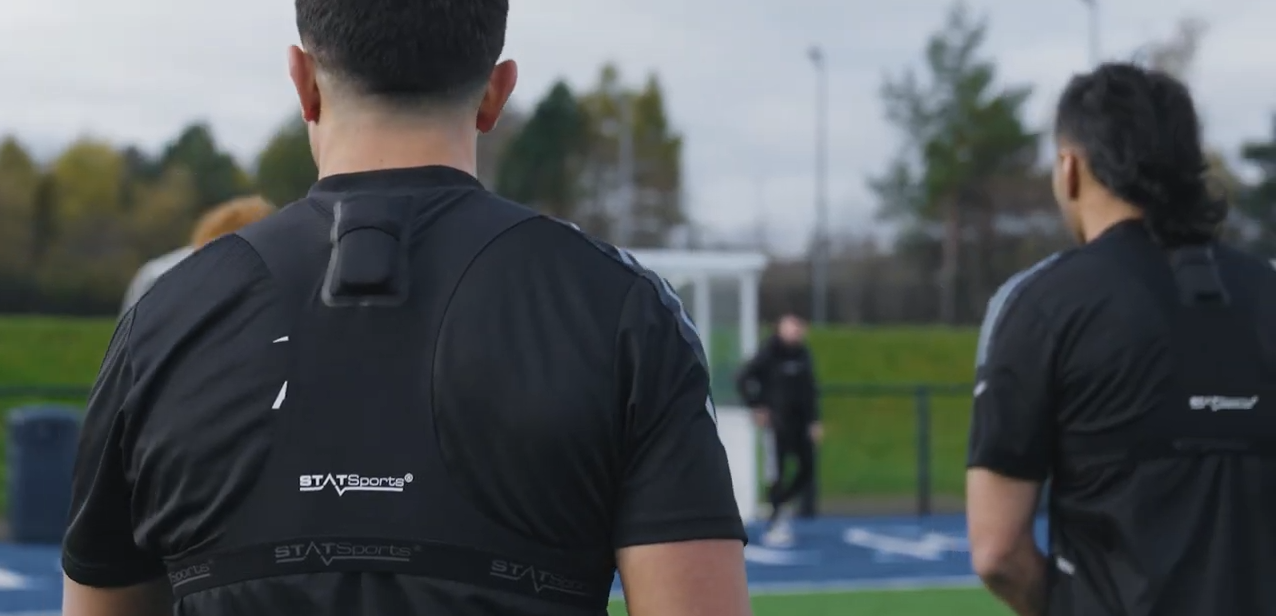
![TATSports wearables attached to two All Blacks [1]](https://lirp.cdn-website.com/3541690e/dms3rep/multi/opt/Copy+of+image-showing-statsports-1920w.png)